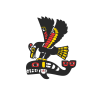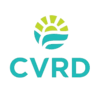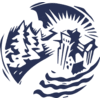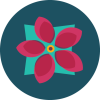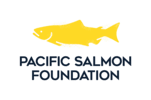By Rodger Hunter, Co-ordinator, Cowichan Watershed Board, October 19, 2010
The weather has turned in the watershed. On Thanksgiving weekend there is some serious rain. Things got very busy at the Department of Fisheries and Ocean’s counting fence that spans the Cowichan River below Allenby Road and above the Island Corridor railway bridge.
By Rodger Hunter, Co-ordinator, Cowichan Watershed Board, October 19, 2010
The weather has turned in the watershed. On Thanksgiving weekend there is some serious rain. Things got very busy at the Department of Fisheries and Ocean’s counting fence that spans the Cowichan River below Allenby Road and above the Island Corridor railway bridge.

The oldest counting fence that DFO operates is located below Babine Lake and dates back to 1946. On Vancouver Island the Carnation Creek counting fence has operated since 1970. DFO’s Cowichan watershed fence dates back to 1988. The purpose of our fence is to get an accurate count of the Chinook salmon that migrate up the Cowichan River to spawn. DFO installed it right after Labour Day. In years when fall water levels remain low it remains in place until October 28th. The fence is operated under contract with Cowichan Tribes. Crews work on a 24/7 basis. Day shifts are usually the easiest because the vast majority of the salmon make their way upstream between midnight and 8am.
At the fence site, the river is shallowest by the southern bank of the Cowichan and deepest by the north bank near the shack in the picture. Fence panels are made of closely spaced PVC pipe. Fish are directed to its northern end where they are able to swim through an opening. As they pass through the fence they are videoed, identified and counted by crew members. On Thanksgiving Sunday it was really exciting to watch the Chinook start to move in numbers. There goes another, another, another… -It was hard to keep up. Besides salmon, otters and mink occasionally pass through the fence and once in awhile a bear will visit the site. The majority of Chinook salmon that pass through the fence migrate up to an area a few km past Skutz Falls and spawn anywhere between there and Cowichan Lake. Historically, when numbers were higher spawning was reported in a number of the tributaries of Cowichan Lake as well.
Accurate assessment of Cowichan Chinook salmon is really important because our Chinook are used as an indicator for the relative strength or weakness of the Lower Strait of Georgia Chinook stocks. Cowichan data are used to manage Chinook fisheries under the Canada-US Pacific Salmon Treaty. Fewer fish making it to their spawning grounds could mean stricter regulations and less fishing.
Unfortunately, numbers of Chinook salmon returning to the Cowichan have been very low particularly since 2002. Last year we hit an historical low with only about 540 natural spawning Chinook and 240 available for the hatchery. The annual target for escapement (returning spawners) is 6500 Chinook.
There is a long way to go but there are positive some signs. First there are the many volunteers who continue to work on habitat improvement in the watershed. Secondly, it looks like escapement this year should end up being at least double last year’s. Also the number of two-year Chinook appears to be quite a bit higher this year indicating that survival at sea is improving. Hopefully this means that next year’s overall run will increase as well.
For more information about watersheds and the Cowichan Watershed, please visit www.cowichanwatershedboard.ca
 Email
Email